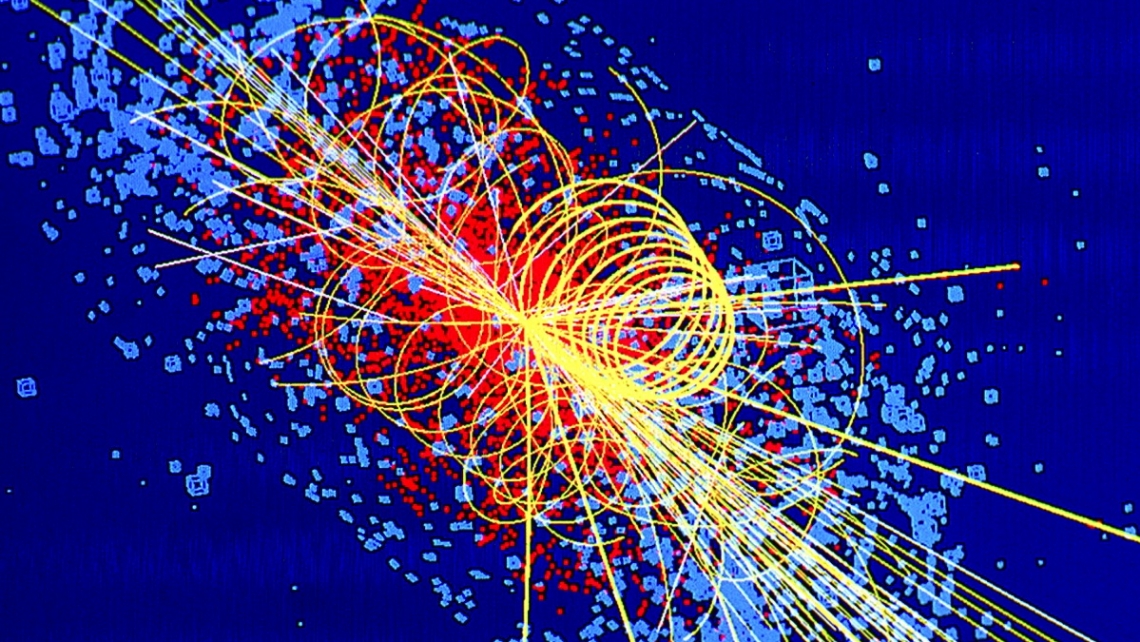The Higgs boson stands as one of the most celebrated discoveries in contemporary particle physics, a particle that was once merely a theoretical construct. But what is the Higgs boson, and why does it evoke both intrigue and complexity in the realm of fundamental physics? One might ask: can a particle fundamentally imbue mass to other particles? This question touches on the very essence of how elementary constituents of matter interact and gives rise to the universe as we know it.
At the heart of the Standard Model of particle physics, the Higgs boson occupies a pivotal role. It serves as a manifestation of the Higgs field, a quantum field that pervades the universe. According to the prevailing theories, particles acquire mass through their interaction with this ubiquitous field. The greater the interaction, the more mass a particle possesses. Thus, without the Higgs boson, particles such as electrons and quarks would remain massless, and the very fabric of matter would be irrevocably altered.
To fully grasp the significance of the Higgs boson, one must delve into the historical context surrounding its theoretical origins. In the 1960s, several physicists, including Peter Higgs, François Englert, and Robert Brout, independently proposed mechanisms for symmetry breaking that involved the Higgs field. They posited that this field allows certain particles to acquire mass while maintaining the gauge symmetry of the electroweak force—a fundamental interaction that unites electromagnetism and the weak nuclear force. The implications of their work opened new avenues in particle physics, leading to a more profound understanding of the universe.
Yet, the discovery of the Higgs boson came only after significant advancements in experimental techniques and technology. It wasn’t until July 4, 2012, that scientists at CERN announced the observational evidence of a particle consistent with the Higgs boson, observed through data from the Large Hadron Collider (LHC). The announcement heralded a monumental milestone, not merely in confirming the existence of the Higgs boson, but in validating the theoretical framework of the Standard Model, which had been long-standing yet remained unproven in this regard.
This validation also posed a plethora of further questions and challenges. If the Higgs boson is indeed responsible for endowing mass, what implications does this have for our understanding of dark matter and the universe’s composition? Researchers are now tasked with probing deeper into the nuances of the Higgs field, investigating potential interactions with other fields or particles that could lead to the identification of dark matter candidates. Furthermore, as one contemplates the Standard Model, it becomes evident that it is incomplete—mysteries such as gravitational interactions and the unification of forces loom large and unasked.
Moreover, the Higgs boson is often described as having a rather precarious existence. The particle is notably ephemeral, existing for an unimaginably brief moment before decaying into other particles. Its average lifetime is on the order of (10^{-22}) seconds, a duration so fleeting that capturing its presence necessitates sophisticated detection strategies. When the Higgs boson decays, it primarily emits other particles, such as photons, W and Z bosons, or fermions like quarks and leptons. The challenge then becomes one of unveiling the signature of this decay to confirm the Higgs field’s properties and its interactions.
The quest for understanding the Higgs boson does not merely hover around its existence; it also encompasses investigations into the parameters governing the Higgs field itself. For instance, physicists are keen to ascertain the mass of the Higgs boson, which has been measured at approximately 125 giga-electronvolts (GeV). However, the means through which this mass is generated remain shrouded in mystery. Theories extending beyond the Standard Model, such as supersymmetry or extra-dimensional theories, provide alternative frameworks, proposing mechanisms that might elucidate the origins of the Higgs boson’s mass and its role in the universe.
One of the more whimsical yet profound challenges in physics is navigating the concept of the Higgs boson within the wider cosmos. Does the universe maintain a hidden layer of symmetry, and how might this relate to the observed asymmetries within it? Why is it that the universe comprises far more matter than antimatter, and does this relate to the dynamics of the Higgs field? Such inquiries beckon for a comprehensive exploration of various forces and particles that govern cosmic evolution, sparking curiosity among both seasoned physicists and novices alike.
Furthermore, the ongoing research surrounding the Higgs boson could ignite a renaissance in theoretical physics. By continuing to unravel the multifaceted nature of the Higgs field, scientists may eventually grapple with phenomena beyond the established realms of the Standard Model. The unexpected observations at high-energy collisions in particle accelerators could lead to revolutionary insights, sparking debates about nuances we have yet to comprehend fully.
In conclusion, the Higgs boson is not merely a particle residing within the cosmic tapestry; it is a cornerstone that invites deeper scrutiny into the nature of mass and the unfolding complexities of the universe. By understanding its properties, interactions, and potential mysteries, one harnesses the opportunity to challenge established paradigms and expand the horizons of human knowledge. The quest for the Higgs boson, and the inquiries it prompts, may well forge the path toward uncharted territories in the landscape of modern physics.












